What is the Difference Between Manual and Automated Material Handling
Understanding the strengths and limitations of each approach is crucial for selecting the right solution and ensuring seamless workflow integration within the material handling industry.
Introduction to Material Handling
Whether moving raw materials into production, transferring work-in-progress between cells, or staging finished goods for shipment, how you handle, lift, and transport items directly impacts productivity, safety, and cost. Broadly speaking, material handling falls into two categories: manual systems—driven by human effort and simple tools—and automated systems, which leverage robotics and computerized controls.
Understanding Manual Material Handling
Definition and Scope
Manual material handling (MMH) refers to any operation where workers use their physical strength—augmented by basic tools—to move, lift, position, and store loads. Typical MMH activities include lifting, lowering, pushing, pulling, carrying, and restraining. While often viewed as low-tech, MMH regularly incorporates simple devices such as pallet jacks, hoists, and small cranes to boost capacity and reduce fatigue.
Key Equipment Types
- Lifting Clamp: These tools provide mechanical advantage when gripping steel plates, pipes, or beams. Appropriate clamp selection enhances safety and prevents product damage.
- Scissor Lifter: A platform that raises or lowers loads to an ergonomic height, minimizing bending and reaching.
- Hooks, Slings & Straps: Flexible solutions for irregular loads—though they require careful rigging.
- Pallet Trucks & Hand Trucks: Ideal for moving palletized goods or multiple boxes along short runs.
- Manual Cranes: Wall-mounted or jib configurations that handle repetitive lift points.
Benefits of Manual Handling
- Low Capital Investment
Initial outlay for equipment like pallet jacks or simple hoists is minimal, making MMH attractive to small and medium enterprises. - Flexibility
Workers can adapt instantly to unique loads and unpredictable workflows without reprogramming. - Rapid Deployment
Manual setups require little to no installation time—often ready to use within hours.
Limitations and Safety Considerations
- Variable Productivity: Human pace and endurance vary, leading to inconsistent cycle times and throughput.
- Ergonomic Risks: Repetitive lifting and awkward postures increase the likelihood of musculoskeletal injuries.
- Error-Prone Processes: Manual data entry and human judgment can cause inventory inaccuracies.
- Limited Scalability: When demand spikes, adding shifts or staff may be the only way to raise output.
Exploring Automated Material Handling
What Constitutes Automation?
Automated material handling (AMH) integrates computerized controls, sensors, and robotics to perform tasks—such as moving, sorting, storing, and retrieving—without continuous human intervention. By programming logic into an overarching system (e.g., a Warehouse Management System), AMH solutions can execute precise, repeatable workflows across large facilities.
Core Automated Technologies
- Conveyor Systems: Convey bulk or packaged goods over long distances at consistent speeds.
- Automated Guided Vehicles (AGVs) and Autonomous Mobile Robots (AMRs): Driverless carts that transport pallet or case loads on demand.
- Automated Storage and Retrieval Systems (AS/RS): High-density vertical racking served by cranes or shuttles.
- Robotic Palletizers and Depalletizers: Stack and unstack products at high speed with pinpoint accuracy.
- Bucket Elevators & Grain Elevators: Continuous vertical lifting of granular or bulk materials.
Advantages of Automation
- Enhanced Throughput
Automated systems run 24/7 at consistent cycle times, delivering significant productivity gains in high-volume operations. - Precision and Accuracy
Robotics and sensors minimize errors in pick, place, and sort tasks, reducing rework and stock discrepancies. - Improved Safety
By removing workers from hazardous zones, AMH lowers injury rates and ensures compliance with stringent safety standards. - Space Optimization
Systems like AS/RS utilize vertical space efficiently, increasing storage density without expanding your footprint.
Drawbacks and Implementation Challenges
- High Upfront Costs
Capital expenditures for robotics, software, and integration can be substantial, often requiring multi-year ROI projections. - Complex Maintenance
Advanced equipment demands specialized technical skills for troubleshooting, calibration, and software updates. - Reduced Flexibility
Reconfiguring automated workflows for new product lines or layouts can involve significant replanning and downtime.
Comparative Analysis: Manual vs. Automated Material Handling
Selecting between manual and automated approaches hinges on a balance of key factors:
Cost and Return on Investment
- Manual: Low initial investment—but higher ongoing labor costs and potential injury liabilities.
- Automated: Significant capital outlay offset by reduced labor expenses and energy-efficient designs (e.g., battery-powered forklifts vs. fuel). Leasing or financing options can shorten payback periods.
Throughput and Scalability
- Manual: Suited to low-to-moderate volumes with variable demand. Peak periods require overtime or temporary hires.
- Automated: Ideal for predictable, high-volume workflows. Systems can scale by adding modules or software licenses rather than headcount.
Accuracy and Quality
- Manual: Prone to human error in inventory counts and order picking.
- Automated: Nearly flawless cycle execution, enhancing order accuracy and reducing scrap—critical in industries handling fragile components.
Safety and Ergonomics
- Manual: Ergonomic aids—like lift tables and scissor lifter platforms—mitigate injuries, but risk remains in repetitive tasks.
- Automated: Machines handle heavy or awkward loads, reducing musculoskeletal strain, though rigorous safety guarding and sensors are essential.
Flexibility and Changeover
- Manual: Workers can pivot seamlessly to new tasks or custom orders.
- Automated: Changeovers require reprogramming and potential hardware swaps, though modular AGVs and conveyors offer growing flexibility.
Essential Equipment Examples in Material Handling
Portable Gantry Cranes Systems
For situations demanding mobility and high load capacity, consider portable gantry cranes systems. These modular units support gantry crane material handling across open bays, providing overhead lift capabilities without permanent infrastructure.
Articulated Jib Cranes
Compact and versatile, articulated jib cranes deliver precise swing-and-lift at single workstations. Their floor- or wall-mounted frames optimize floor space while offering smooth, ergonomic material positioning.
Horizontal Scissor Lifting
The horizontal scissor lifting platform raises and tilts pallets to optimal heights, reducing bending and twisting. When paired with lifting clamp attachments, it streamlines loading and unloading processes.
Slab Lifting Products
Specialized slab lifting products handle heavy stone, metal, or composite panels with secure clamping and adjustable jaws. These systems prevent surface damage and maintain precise orientation during transport.
Vacuum Lifter Systems
A vacuum lifter systems solution uses suction cups and pumps to handle smooth, non-porous sheets—such as glass, metal plate, and stone—without leaving marks. Integrating these devices enhances throughput in finishing and assembly lines.
Ratchet Tie-Down Traps
For secure load transport, rely on the use of the ratchet tie down straps. Their high-tensile webbing and mechanical leverage ensure cargo remains immobilized on racks, trucks, or conveyors.
Lifting Clamps
Lifting clamps—from vertical plate clamps to universal beam clamps—apply consistent gripping force to varied load profiles. Their simplicity and reliability make them staples in both manual and semi-automated workflows.
Crafting a Hybrid Material Handling Strategy
Rather than viewing manual and automated systems as mutually exclusive, many organizations adopt a hybrid approach—blending human agility with machine precision.
Pilot Projects and Scaling
Begin with a targeted pilot—perhaps automating palletizing with conveyors and robots—while retaining manual handling for custom orders. Assess ROI on key metrics (throughput, error reduction, safety incidents) before broader rollouts.
Integrated Control Systems
Modern Warehouse Management Systems (WMS) and Manufacturing Execution Systems (MES) can orchestrate both manual and automated resources. For example, AGVs deliver bulk pallets to human-operated pick modules equipped with lifting clamp attachments, ensuring balanced workloads.
Engaging a Reputable Partner
Collaborating with a reputable material-handling company ensures your solution is tailored to facility layout, throughput targets, and budget. They’ll recommend the right mix of devices and guide implementation from design to training.
Advanced Material Handling Trends
Staying ahead in the competitive material handling industry requires embracing emerging technologies and best practices.
Robotics and Cobots
Collaborative robots (cobots) work safely alongside humans, automating repetitive tasks—such as pick-and-place—without extensive guarding.
IoT and Predictive Analytics
Sensors embedded in conveyors, cranes, and forklifts feed real-time data into analytics platforms. Predictive maintenance reduces downtime by addressing wear before failures occur.
Sustainable Operations
Energy-efficient drives, regenerative braking, and zero-emission vehicles lower carbon footprints and support corporate sustainability goals.
Choosing the Right Path Forward
Deciding between manual, automated, or hybrid material handling hinges on several factors:
- Volume and Predictability
High, repetitive volumes favor automation; variable, custom orders lean manual. - Budget and ROI Timeline
Manual systems deliver quick payback; automated systems require longer horizons but yield greater long-term savings. - Workforce Capabilities
Assess technical skills for programming and maintenance versus ergonomic training for MMH. - Space Utilization
Vertical AS/RS and conveyors maximize cubic footage; manual racks and floor space may suffice for smaller footprints. - Product Characteristics
Fragile or heavy loads often justify automated vacuum lifter systems, slab lifting products, or horizontal scissor lifting for damage-free handling.
By conducting a thorough Total Cost of Ownership (TCO) analysis and engaging experienced partners, you can architect a material handling solution—whether manual, automated, or a combination—that aligns with operational goals and budget constraints.
Conclusion
In conclusion, both manual and automated material handling approaches have distinct advantages within the material handling industry. Manual systems excel in flexibility, low initial costs, and rapid deployment, while automated systems deliver superior speed, consistency, and space optimization. Leveraging equipment such as lifting clamp devices, scissor lifter platforms, and gantry crane material handling units—alongside innovations in robotics and IoT—enables organizations to craft hybrid strategies that optimize productivity, safety, and ROI. Whether you begin with a pilot in advanced material handling or invest in comprehensive AGV fleets, thoughtful alignment of technology with business needs is the key to unlocking next-level performance. Ultimately, partnering with the right experts, planning thoroughly, and monitoring results will ensure your facility remains agile, efficient, and competitive in an ever-evolving market.


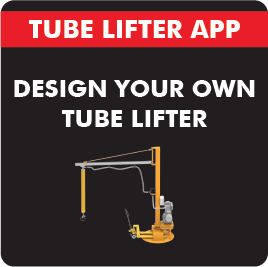

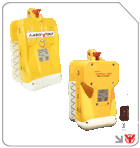
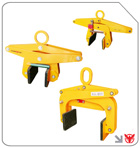
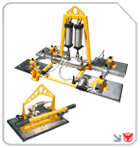
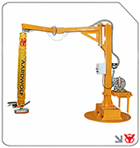
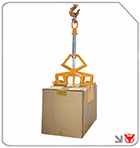
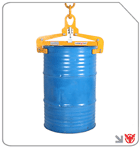
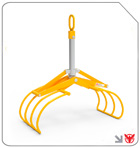
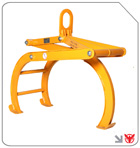
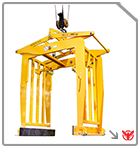
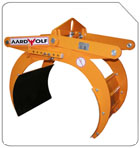
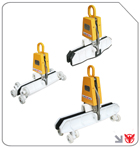
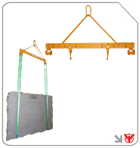
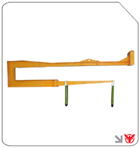
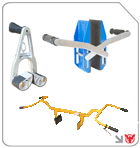
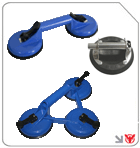

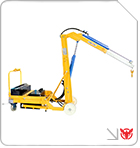
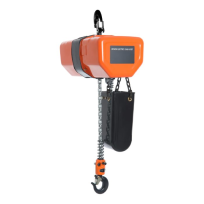
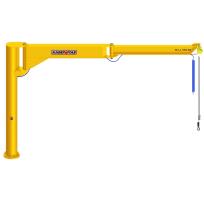
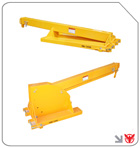
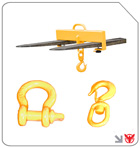
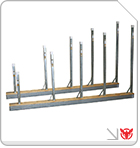
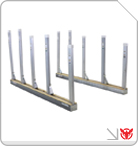
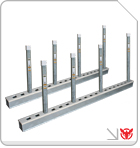
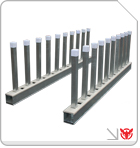
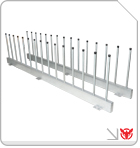
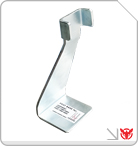
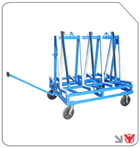
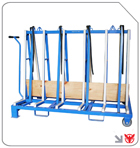
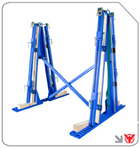
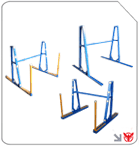
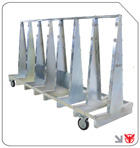
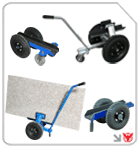
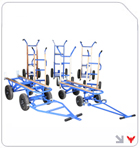
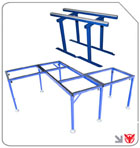
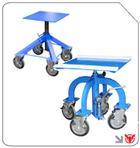
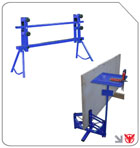
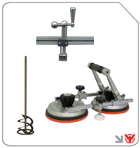

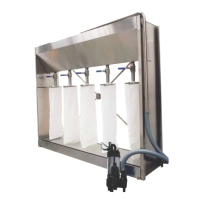
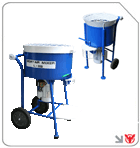
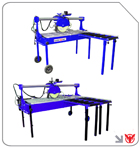
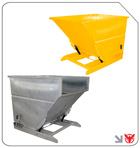
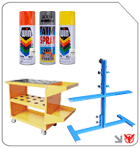
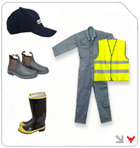
Follow us on: